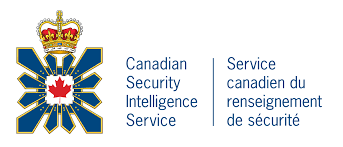
Canadian Security Intelligence Service (CSIS)
- Agency: Canadian Security Intelligence Service (CSIS)
- Creation Date: July 16, 1984
- Legal Act: Canadian Security Intelligence Service Act, Enacted into law on July 16, 1984
- Location of Headquarters: Ottawa, Ontario, Canada
- Person in Charge: (2024) Director David Vigneault (Born: March 12, 1962)
- Number of Employees: (Classified) – estimated to be over 3,000
- Annual Budget: (Classified) – estimated to be over $649,000,000.00 CAD
- Website: www.csis.gc.ca
- Mission Statement: To protect Canada's national security interests by investigating and analyzing threats, sharing intelligence, and providing advice to the government.
- Stated Principles: Professionalism; Integrity; Respect for Human Rights; and Accountability.
- Collection Type: HUMINT and others
- Organization Type: Civilian
- Oversight Body: National Security and Intelligence Review Agency (NSIRA)
- Area of Operations: Domestic / National
- Brief History: CSIS was established under Prime Minister Pierre Trudeau on July 16, 1984, through the Canadian Security Intelligence Service Act. Its creation was influenced by the findings and recommendations of the MacDonald Commission, officially known as the Commission of Inquiry Concerning Certain Activities of the Royal Canadian Mounted Police (RCMP). The MacDonald Commission, led by Justice David Cargill McDonald, was established in 1977 to investigate activities of the RCMP, including security intelligence. The commission played a crucial role in shaping Canada's approach to intelligence and national security. Its findings led to the decision to create CSIS, separating intelligence functions from law enforcement within the RCMP.
- Powers: CSIS operates within Canadian borders and is tasked with collecting intelligence on activities that may pose a threat to national security. It does not have law enforcement powers but works closely with other agencies, including the RCMP. CSIS is authorized to take measures to reduce threats to the security of Canada, which may include a range of actions aimed at mitigating risks and preventing harm. The specific nature of Threat Reduction Measures is not publicly disclosed due to security considerations.
- Notable Operations:
- Air India Flight 182: In 1985, the bombing of Air India Flight 182 resulted in the deaths of 329 people. CSIS was criticized for not preventing the attack, leading to reforms in Canada's intelligence and security agencies.
- Arar Inquiry (September 2006): In 2006, the inquiry into the case of Maher Arar revealed failures in information-sharing and led to changes in how Canadian agencies handle national security cases.
- Toronto 18 (June 2006): In 2006, CSIS played a key role in uncovering and disrupting the activities of a terrorist group known as the "Toronto 18." The group was planning a series of terrorist attacks in Canada, including the bombing of various targets. CSIS, in collaboration with law enforcement agencies, successfully intervened, leading to arrests and the prevention of planned attacks.
